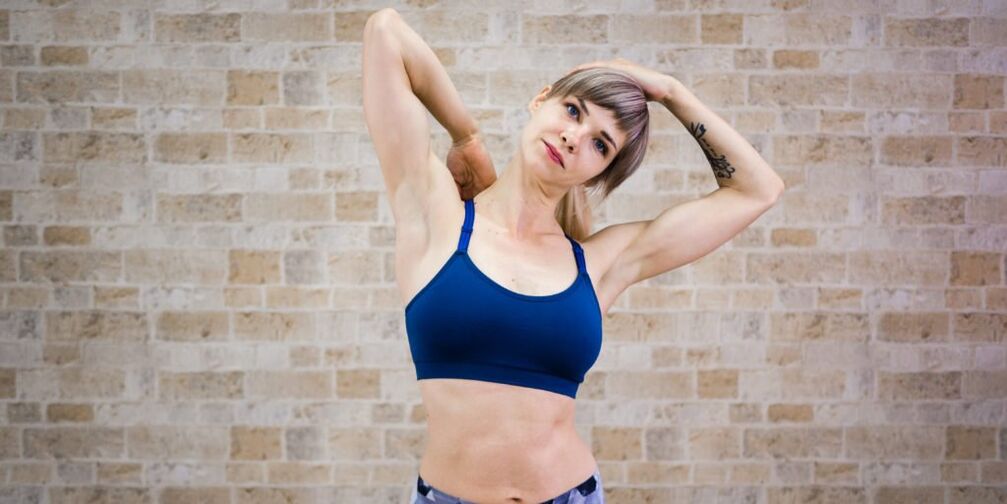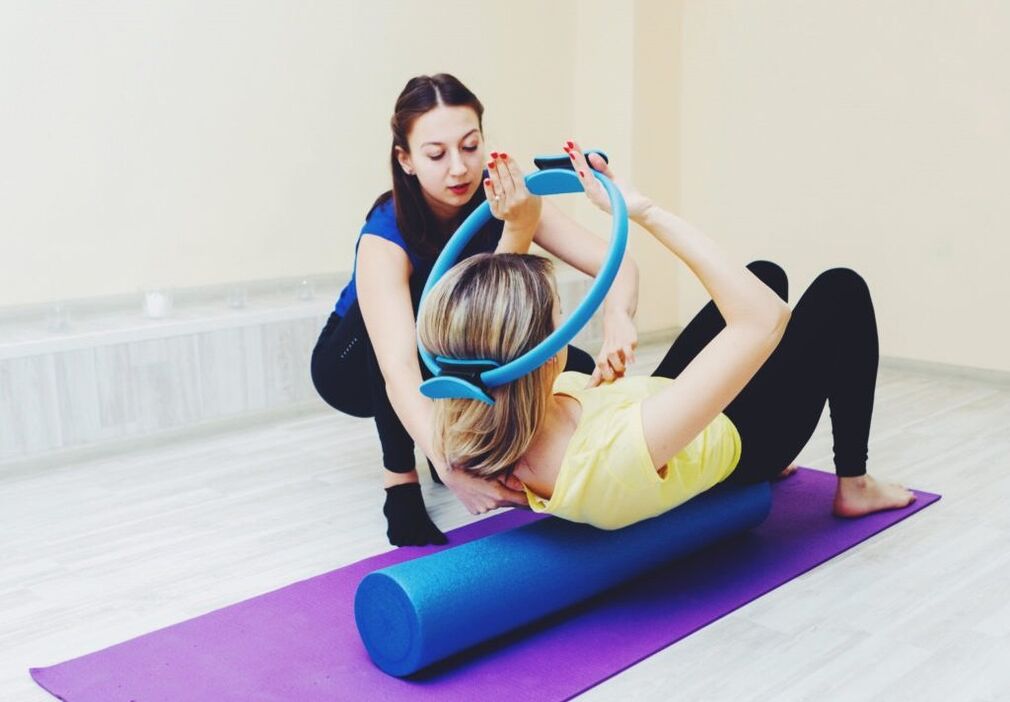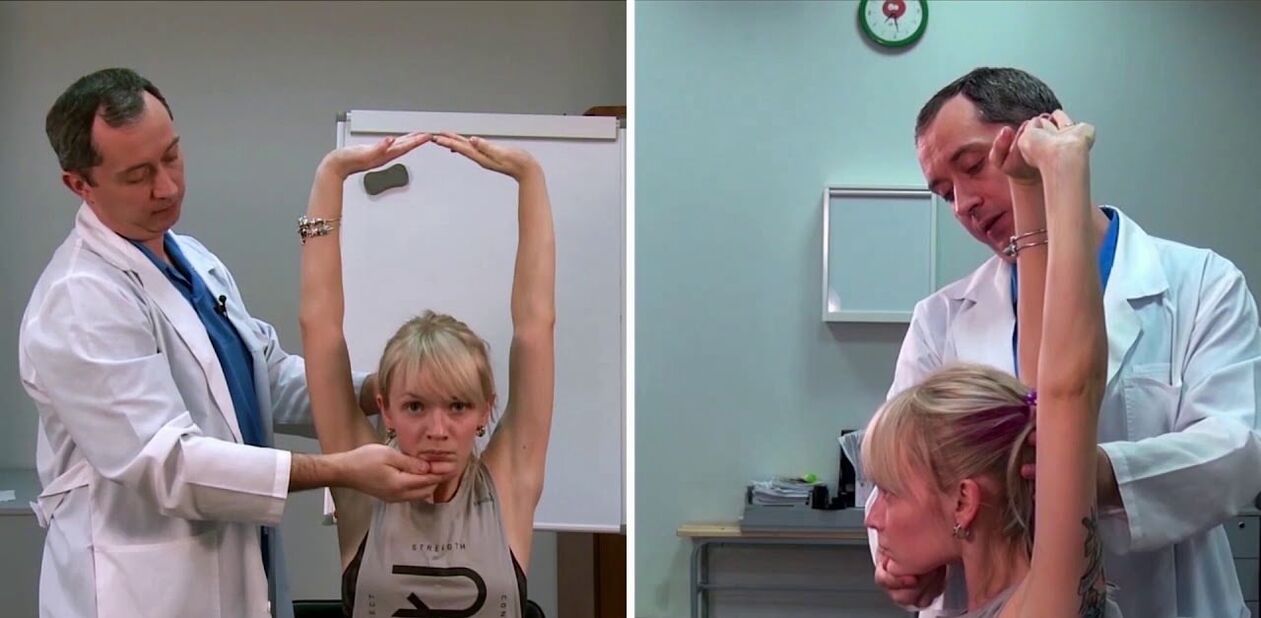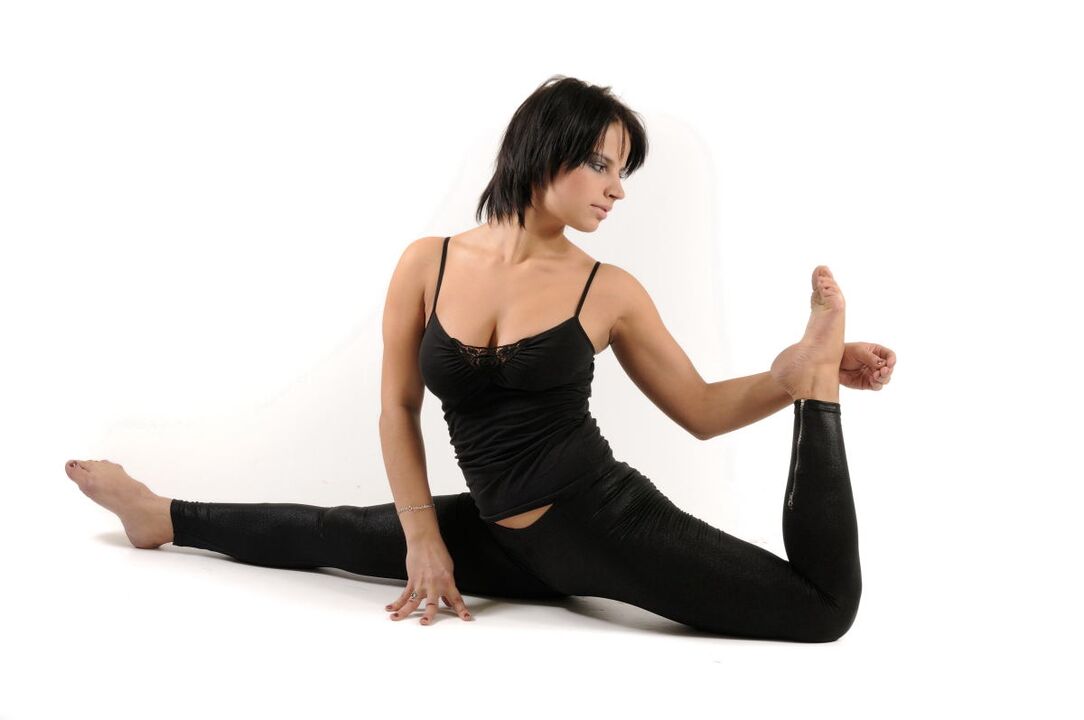In addition to basic treatment and physiotherapy, patients are recommended to do special exercises for cervical osteochondrosis. They alleviate the human condition and prevent the development of dangerous complications. You can play permitted sports only during remission of the disease. The safety of this therapy should be discussed with your doctor. He will recommend a set of exercises that promote recovery.
Gymnastics for cervical osteochondrosis

Gymnastics aimed at the cervical spine brings great benefits to a person with this diagnosis. This helps you recover faster and get rid of severe pain at the site of the injury. If you perform special exercises for the neck at an early stage in the development of pathology, you can forget about the main symptoms of the disease of the musculoskeletal system in a short period.
Therapeutic gymnastics has many positive aspects. It helps to extend the period of remission and eliminate clinical signs of the disease.
The effect after loading begins to appear after about a month of regular exercise.
Gymnastics for the neck with osteochondrosis can be harmful if it is not performed according to the rules.
Indications
Performing special exercises for cervical osteochondrosis is indicated in the presence of the following disorders:
- Osteochondrosis of the thoracic region in people of different ages.
- Osteochondrosis of the 1st and 2nd cervical vertebrae.
- Osteochondrosis of uncertain location.
The charging will be useful for people at risk. We are talking about people with a weakened muscular skeleton. This also includes men and women who are forced to spend most of the day in front of the computer.
Contraindications

Physiotherapy recommended for cervical osteochondrosis may be contraindicated in the presence of the following conditions:
- Exacerbation of pathological processes that lead to severe pain.
- Instability of the cervical vertebrae.
- Exacerbation of osteochondrosis accompanied by a moderate clinical picture.
- Development of acute diseases caused by infectious agents.
- Certain diseases of internal organs that are not infectious in nature.
The patient does not always understand whether physical exercise with this diagnosis is beneficial or harmful. To answer this question, he must be fully evaluated for contraindications to this treatment option. Also, it would not be superfluous to consult a competent specialist who deals with the treatment of diseases of the musculoskeletal system.
Class results
Exercise can achieve positive results in treating the disease. An individually selected complex will help eliminate pain. It is effective against the main symptoms of cervical osteochondrosis. To achieve this result, it is necessary to entrust the detection of manifestations (symptoms) of the disease and its treatment to an experienced doctor.
Don't expect instant results from exercise. The first positive changes appear only after one or several months. It all depends on the severity of the disease and the regularity of training.
Exercise Sets

Exercises, recommended for osteochondrosis of the cervical spine, should be part of the daily routine of anyone with this diagnosis. To get the maximum effect from classes, do not forget to regularly take medications prescribed by your doctor. Before starting to perform gymnastic exercises and any type of therapeutic exercise, you should do a brief warm-up. This will prepare the body for more stress.
It is advisable to start charging after a hot shower. During the water procedure, it is necessary to direct a jet of not very hot water to the neck area for a few seconds.
As a warm-up, you can alternately lean to the sides and turn your head. Charging should be done without any problems. At the same time, you need to ensure that your breathing remains even. These simple exercises are extremely useful as they sufficiently warm up the muscles.
Exercise therapy
Exercise therapy is often prescribed to patients with cervical osteochondrosis. During training, not only the muscles of the problem area are involved, but also other parts of the body. This prevents them from becoming overwhelmed.
Exercise therapy includes various exercises aimed at osteochondrosis of the cervical spine. They are grouped into separate methods and programs.
Patients should pay attention to eight basic exercises against cervical osteochondrosis:
- Turn your head in different directions with fixation for 10 seconds.
- Tilt and throw your head back with fixation for 10 seconds.
- Tilts from head to shoulders with resistance.
- Bringing the shoulders together and holding them for 10 seconds.
- Alternating shoulder raises.
- Circular shoulder movements.
- Place your palms on your back, below your shoulder blades, and hold for 10 seconds.
- Tilts of the body in different directions.
This type of training can be done outside of the gym. This is a kind of preparation for osteochondrosis, which is carried out at home.
Each of these 8 exercises must be repeated 10 to 15 times.
Pilates

Pilates offers its own exercises to improve health. In the process of performing them, a person's back muscles are strengthened and blood circulation is normalized.
A patient diagnosed with osteochondrosis of the cervical spine can practice Pilates. Such training allows you to relieve spasms and improve the condition of the vertebrae.
Pilates provides a feeling of freedom and relief. Regular exercise will relieve pain and normalize the condition of muscle tissue. The complex for the patient's neck must be prepared by a specialist. Doing this alone is strictly prohibited.
Aqua aerobics
Water aerobics is just as useful as gymnastics. Thanks to these activities, your back stops hurting. They have a positive effect on the entire human body. A patient treated with this method will confirm that exercises for chronic cervical osteochondrosis can be done in water.
Before performing the exercises, you need to warm up.
A set of exercises for osteochondrosis, performed in water, is selected by a specialist. During training, the muscles in the joint region must be affected. As a result, the load on the location of the vertebrae and other structures of the musculoskeletal system is reduced.
Gymnastics can be periodically replaced with regular swimming of any kind. The ideal duration of this class is 45 minutes. It is recommended to train 3 times a week.
Isometric exercises
Gymnastics for cervical osteochondrosis can be based on isometric exercises. This type of training eliminates displacement of the trained area by bending or turning.
The essence of the exercise is that you need to apply pressure to a certain area of the body. At the same time, the person neutralizes it with the help of muscles. Therapeutic and very effective exercises are repeated as many times as the person's physical fitness allows.
Isometric exercises to suppress symptoms of the disease involve pressure on the temples, cheekbones, chin and forehead.
Classes from a rehabilitation doctor

Gymnastics is actively used for osteochondrosis of the cervical spine. Allows you to train the lateral neck muscles. This workout can be done at home. Classes include the following exercises:
- "Spring". You need to tilt your head forward and touch your chin to your chest. You need to stay in this position for 30 seconds. Then the head is thrown back and held again for the same amount of time.
- "Goose". It is necessary to turn your head to the side. It needs to reach the shoulder. Stay in the accepted position for half a minute. Then in the same way you need to reach the second shoulder.
- "Look at the sky". You need to sit up straight and turn your head completely to the side. You need to stay in this position for 30 seconds. After completing this exercise, you can begin stretching in the other direction.
- "Frame". While sitting, you need to place one hand on your shoulder. The head should be turned in the opposite direction. You need to stay in the position for half a minute. After that, the exercise is repeated on the second side.
- "Fakir". The palms of your hands should be folded and your arms should be slightly bent at the elbows. Then they need to be raised above your head. Next, you need to carefully turn your head in different directions, each time fixing it in this position for 30 seconds.
- "Heron". You need to sit down and spread your arms straight at your sides. At this moment, the chin should be pulled forward until the person feels tension.
Each action must be performed 5 to 10 times.
These exercises are contraindicated during exacerbation of cervical osteochondrosis.
Run
Some men and women with this diagnosis resort to the horizontal bar or exercise with weights for cervical osteochondrosis. However, experts recommend not using dumbbells and other heavy equipment during exercise. Dumbbell training, which includes exercises with dumbbells, can negatively affect a person's well-being, as it is accompanied by an increase in load. It is better to choose running for patients with cervical osteochondrosis.
Healthy running requires compliance with certain requirements that increase the safety and effectiveness of training:
- You can start running only after the warm-up is complete.
- It is recommended to walk a little before starting.
- It is best to choose a forest or park for training.
- Advance purchase of comfortable orthopedic shoes is required.
- After completing the lesson, you should walk a little.
After running, you should take a contrast shower. It is recommended to do the same after completing the exercise therapy complex.
What exercises should you not do?

During the course of acute osteochondrosis, it is necessary to abandon sports activities. This means that you cannot exercise on the crossbar or treadmill, do push-ups or perform exercise therapy complexes. Any exercises should be postponed until the exacerbation of the pathological process is suppressed.
Doctors prohibit patients from exercising regularly when they are sick. This is because it can cause serious harm to a person. It is best to discuss with your doctor which exercises should not be done in cervical osteochondrosis. Knowing this information, you will be able to choose gentler exercises that will help improve your general condition.
If you have osteochondrosis, you should not overexert yourself. Do not make sudden, rotating or tortuous movements. Lifting weights, bending over and jumping are prohibited. Somersaults and shoulder stands are also dangerous.
Recommendations for doing gymnastics
When carrying out health therapy, it is necessary to take into account the recommendations of the attending physician. Refer to the correct training for osteochondrosis. A specialist can give the following advice:
- Exercises should be selected only by a doctor based on the individual characteristics of the human body.
- When choosing a complex, the peculiarities of the pathological process must be taken into account.
- It is best to exercise in natural fabric clothing that does not hinder movement.
- It is recommended to train on a flat, hard surface.
- It is necessary to choose a well-ventilated room for classes.
- The load must be increased gradually.
If a patient experiences neck pain while exercising, they should immediately stop exercising and contact their doctor with this complaint.



































